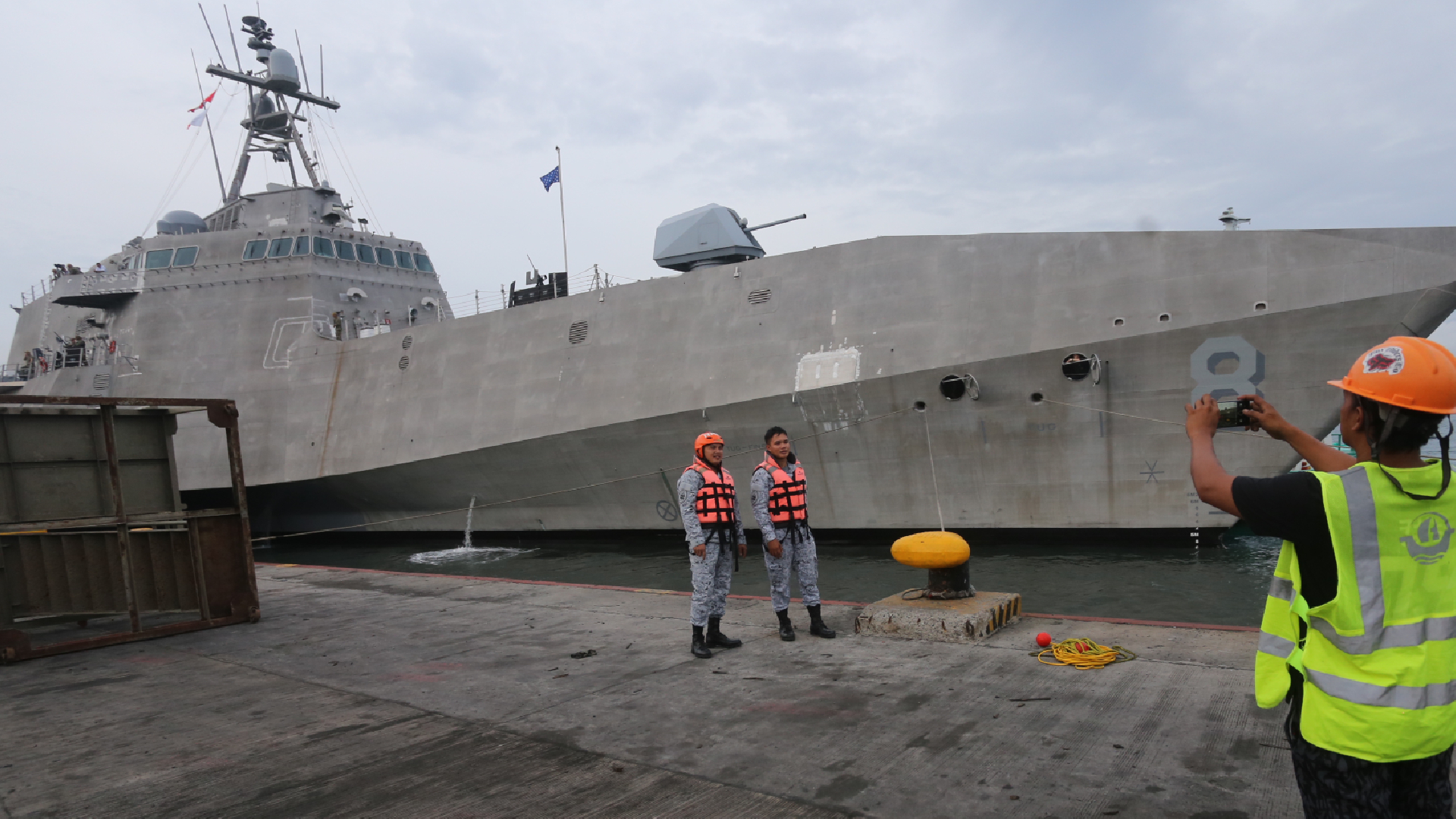
Restricted internet access can be a pain. I would imagine the US Navy, of all things, would have some pretty tight restrictions on what you can and can't do with an official connection on board one of its ships, especially when on a sensitive mission in another country's waters.
So what to do? Well, you could just suck it up and be careful about your internet usage. Or, if you were a senior crew member on the USS Manchester, you could buy a Starlink connection for $2,800, strap it to a pallet, stick it on the outside of your $500 million warship, and call it a day (via Ars Technica). Job done.
According to the Navy Times, Command Senior Chief Grisel Marrero, among other senior staff, did just that. The dish was installed so that those in-the-know could check sports scores, text home and stream movies to the US Naval vessel while it was deployed to the West Pacific, free from the restrictions of the Navy-monitored connection.
The cunning scheme was discovered because the WiFi network was named, rather glaringly, "STINKY", which appears to be one of the default names a Starlink connection could ascribe itself—alongside "STARLINK", which would also be a fairly obvious giveaway.
Blame Elon Musk's sense of humour on this one, as what initially looked like a tweeted joke about the default network name actually appears to have made it into production for a period of time.
We’re changing Starlink’s default wifi name to StinkyJune 18, 2022
Once sailors began noticing the inconspicuous network name that had begun appearing in their WiFi connection options, Marrero denied all knowledge—then changed the name to look like a wireless printer, despite no general-use wireless printers being on board at the time. Some crew members had also put questions about the network in the commanding officer's suggestion box, which Marrero is also said to have removed.
Ironically, the offending, unauthorised Starlink dish was discovered when a worker from the Naval Information Warfare Center was in the process of installing an authorised Space X "Starshield" device. Marreno then attempted to create fake data showing that the system had only been used while the vessel was in port, which fooled precisely nobody—and US Navy investigators began looking into the whole affair.
Marrero pled guilty during a following court martial and was relieved of her post. All of the senior crew who used, paid for, or were aware of the system received "administrative non-judicial punishment at commodore's mast", which sounds suspiciously like being thoroughly shouted at and made to sit on the naughty step for weeks, but, y'know, Navy style.
Well, we've learned several things. For one, installing an unauthorised satellite internet connection on US Navy property is a terrible, terrible idea. And, as I suspect we've always, err, suspected, Elon Musk's sense of humour will be the end of us all. Or at the very least, it appears to have helped torpedo a Naval career here.







